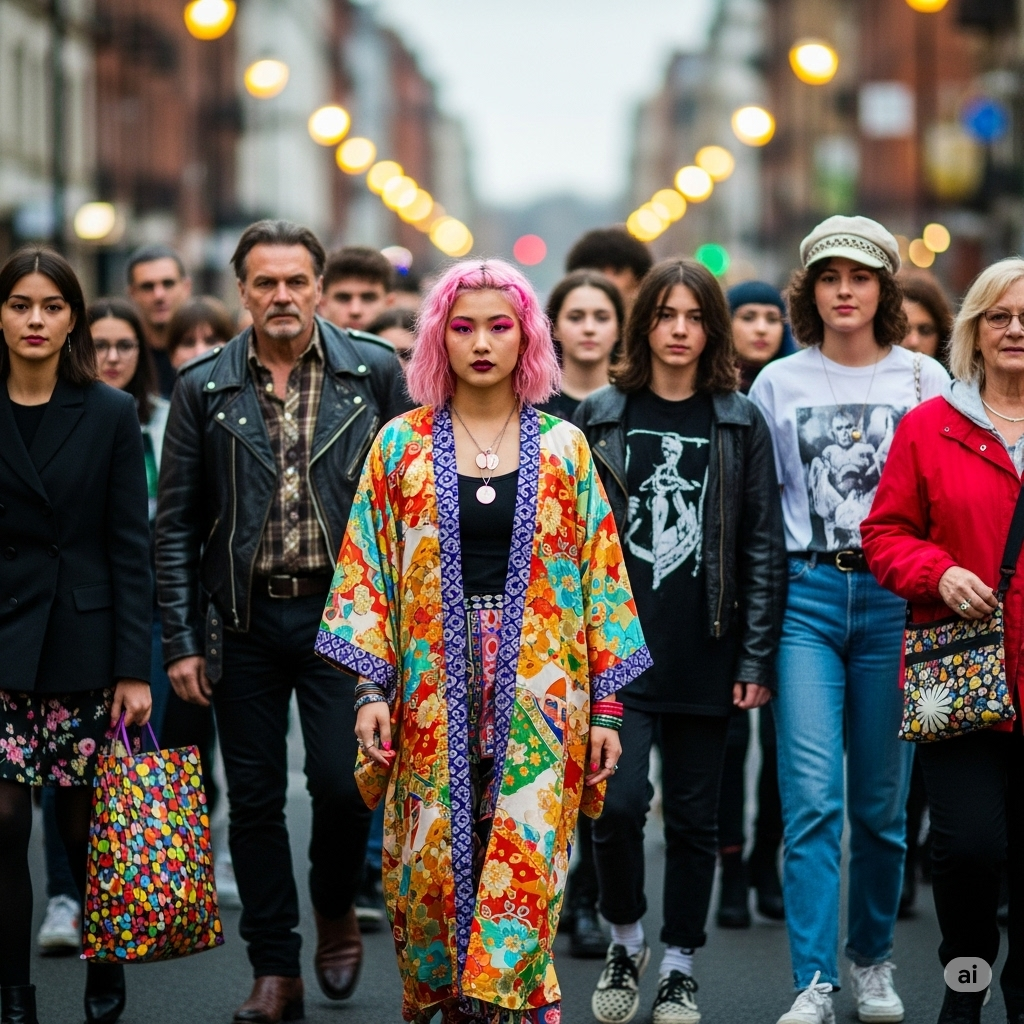No products in the cart.: $0.00
Decoding the Language of Street Style

Street style, once a fringe phenomenon documented by a handful of dedicated photographers, has exploded into a global force that shapes trends and influences the highest echelons of the fashion industry. It’s more than just people wearing clothes; it’s a dynamic and ever-evolving visual language that communicates individuality, cultural influences, and the zeitgeist of a particular moment. Decoding the nuances of street style offers a fascinating glimpse into the personal narratives and broader societal currents that inform our sartorial choices.
At its core, street style is about self-expression. Unlike the curated and often prescriptive nature of runway fashion, street style allows individuals to interpret and adapt trends in their own unique ways. It’s a canvas for creativity, where personal style flourishes through the artful combination of garments, accessories, and attitude. Each outfit tells a story, reflecting the wearer’s personality, interests, and mood.
One of the most compelling aspects of street style is its ability to democratize fashion. While high fashion often remains inaccessible to many, street style draws inspiration from everyday life and the diverse aesthetics of urban environments. It celebrates individuality regardless of budget or brand affiliation. A perfectly styled vintage find can hold just as much sartorial weight as a designer piece, highlighting the importance of personal flair and creative styling.
Cultural influences play a significant role in shaping street style trends. Different cities and communities often develop distinct sartorial identities, reflecting local traditions, artistic movements, and subcultures. The vibrant energy of Tokyo’s Harajuku district, the effortless cool of Parisian chic, and the bold eclecticism of London’s fashion scene each offer a unique visual vocabulary. Observing these regional variations reveals the powerful connection between fashion and cultural identity.
The rise of social media has undeniably amplified the reach and influence of street style. Platforms like Instagram and TikTok have become virtual runways, allowing individuals to share their looks with a global audience. Fashion bloggers and influencers have emerged as key figures, documenting and disseminating street style trends, and blurring the lines between the runway and the everyday. This digital landscape has fostered a more immediate and interactive relationship between creators and consumers of fashion.
Street style is also a barometer of emerging trends. Often, what starts on the streets eventually filters up to the runways and into mainstream fashion. Designers frequently look to street style for inspiration, observing how people are actually wearing and interpreting their creations. This organic flow of ideas highlights the symbiotic relationship between high fashion and the everyday expressions of style.
The details within a street style look often hold significant meaning. The choice of accessories, the way a garment is layered, or even the subtle nuances of color coordination can convey a specific message or reflect a particular aesthetic. These seemingly small elements contribute to the overall impact of the outfit and reveal the wearer’s attention to detail and personal style philosophy.
However, the authenticity of street style has also come under scrutiny in recent years. The rise of sponsored content and staged “street style” moments has raised questions about the genuine nature of some captured looks. It’s important to discern between organic expressions of personal style and carefully curated ensembles designed for promotional purposes. True street style, at its heart, remains rooted in genuine self-expression and the spontaneous creativity of individuals navigating their urban environments.
Ultimately, the language of street style is one of constant evolution and adaptation. It reflects the dynamic interplay between individual expression, cultural influences, and broader societal trends. By learning to decode its visual cues, we gain a deeper understanding of the personal narratives and collective aspirations that shape the way we dress and present ourselves to the world. Street style continues to be a powerful and inspiring force, reminding us that fashion, at its most authentic, is a deeply personal and endlessly fascinating form of communication.




